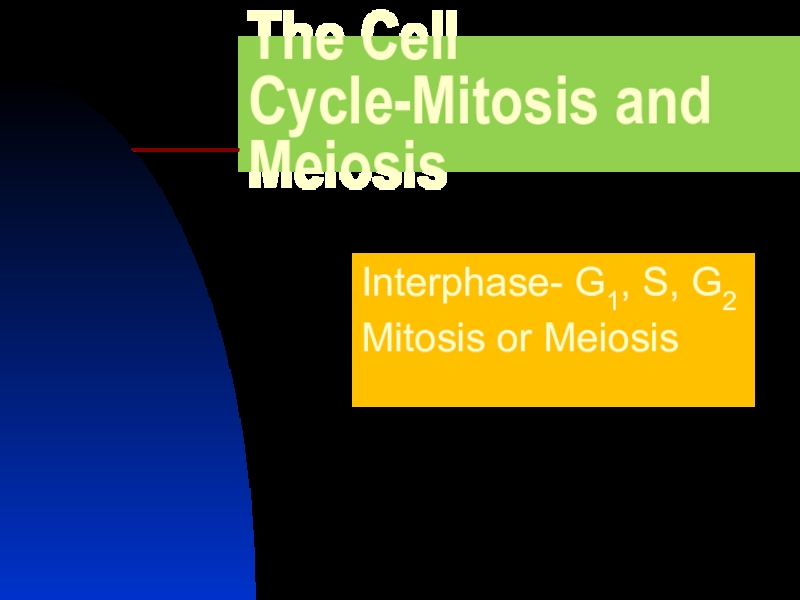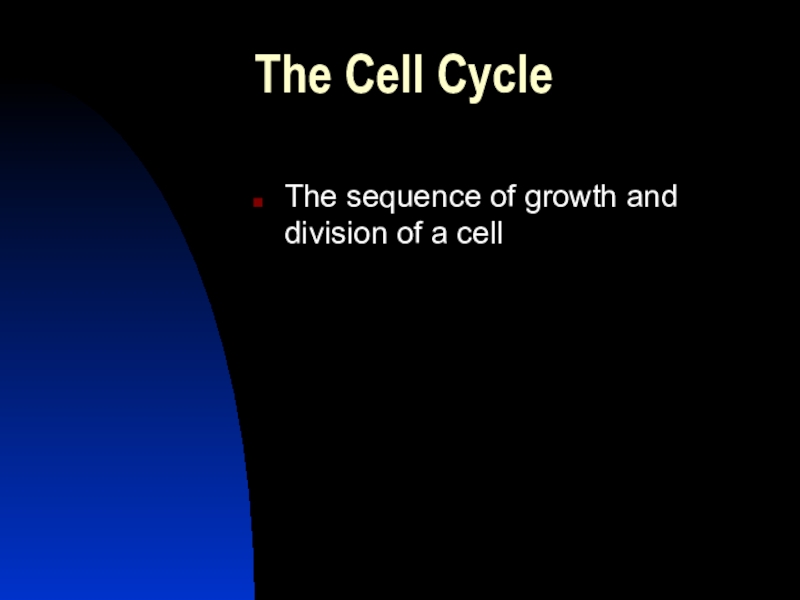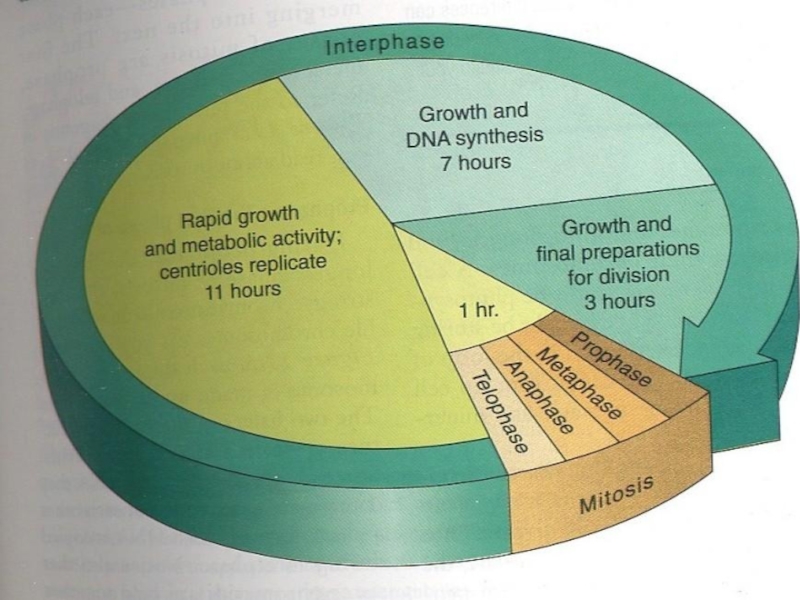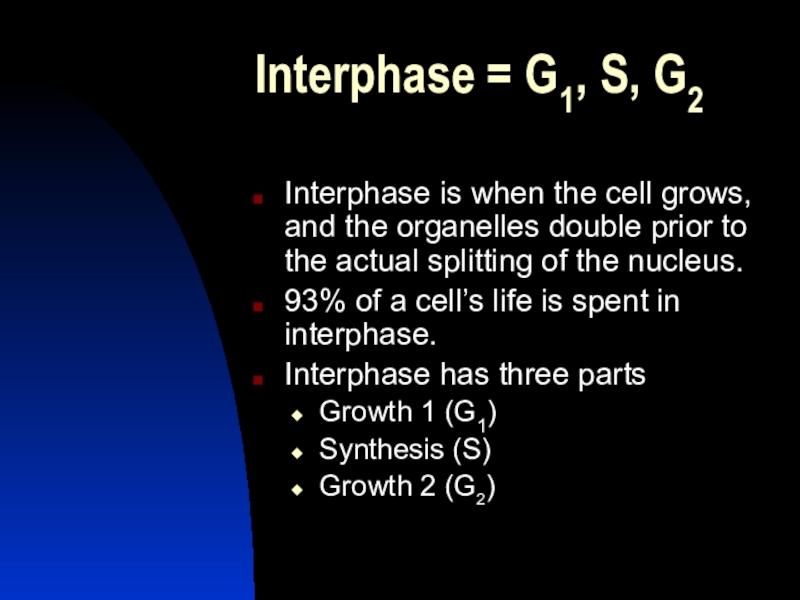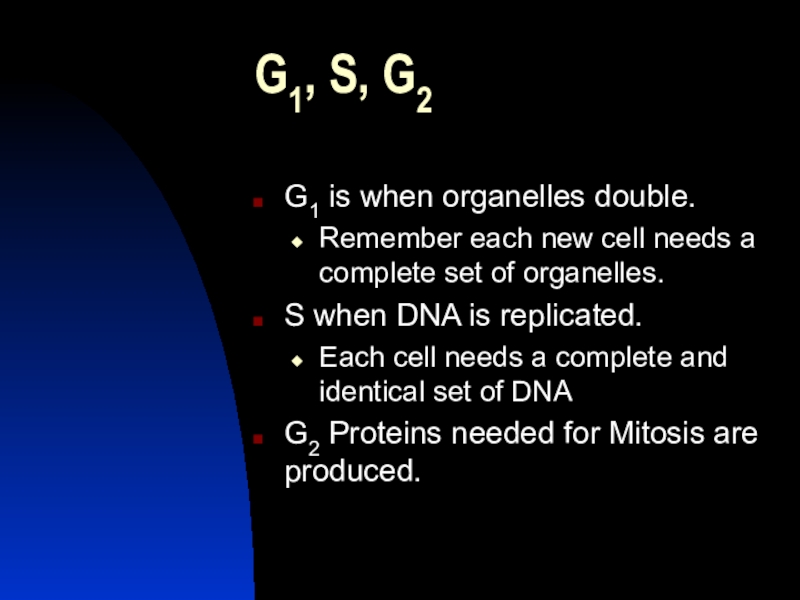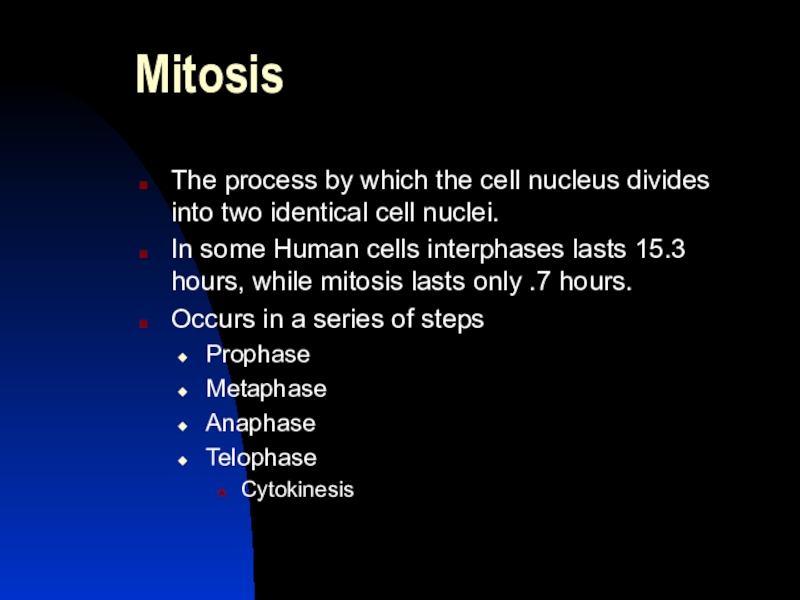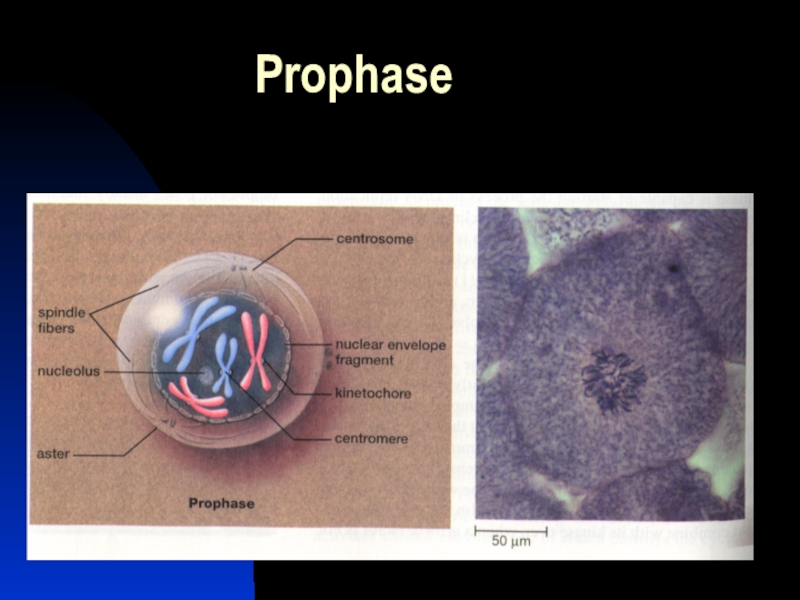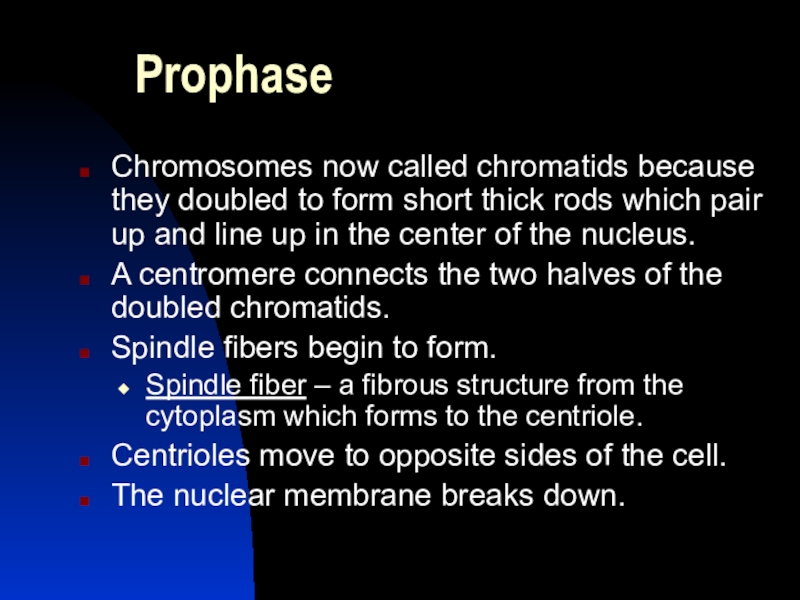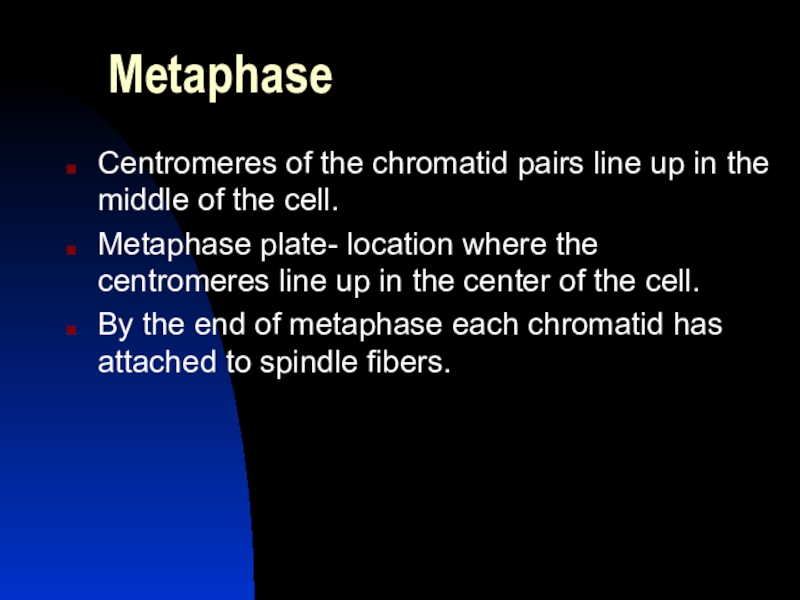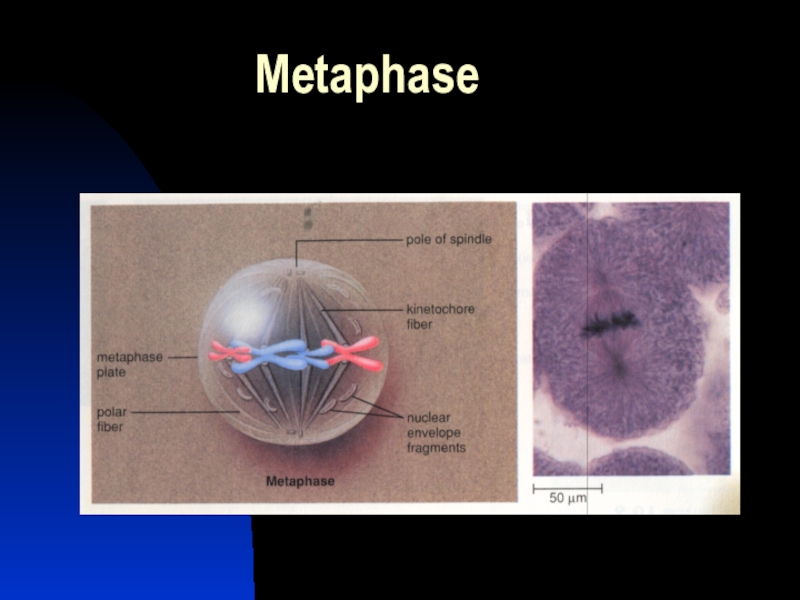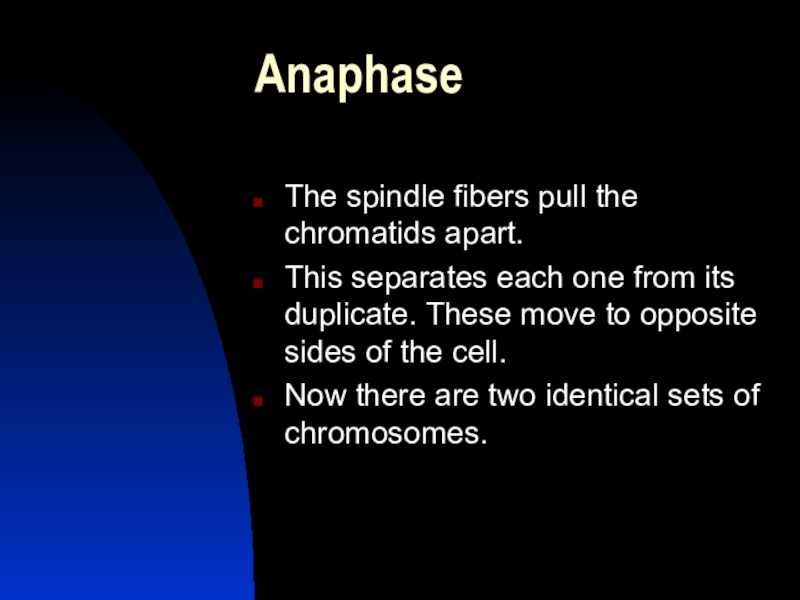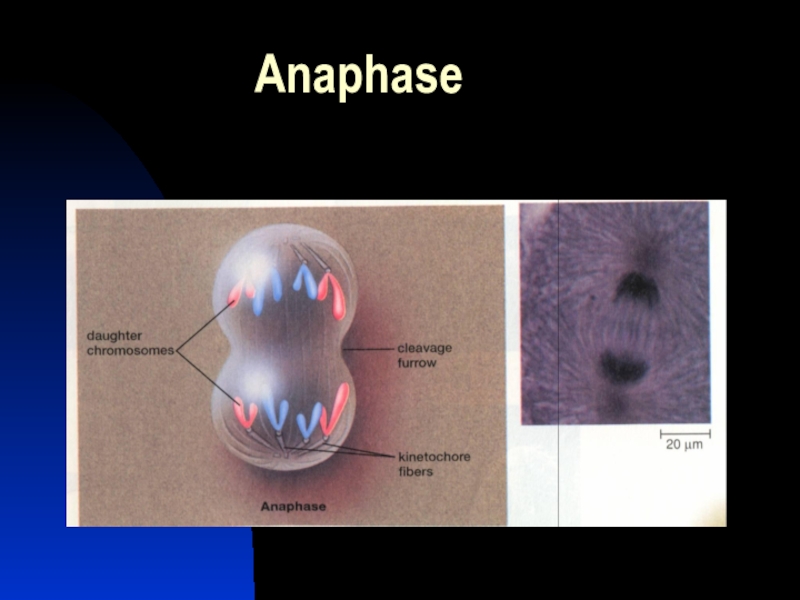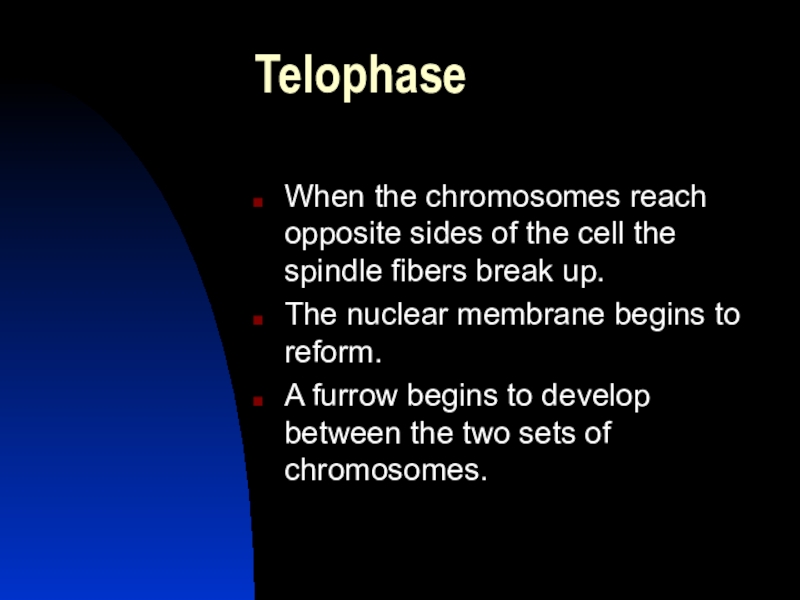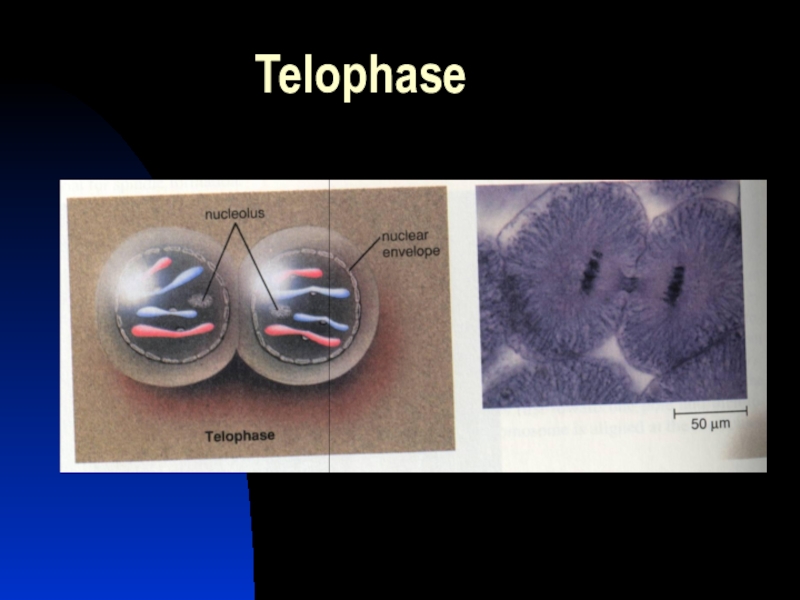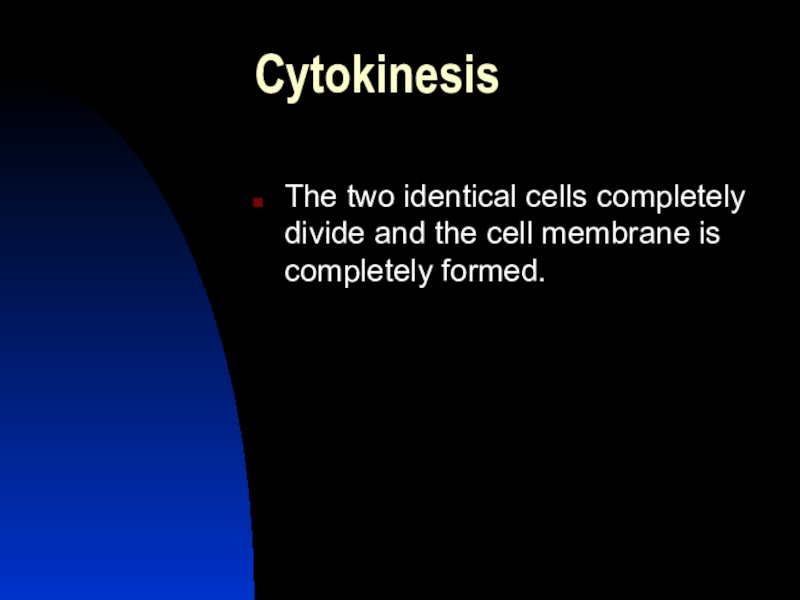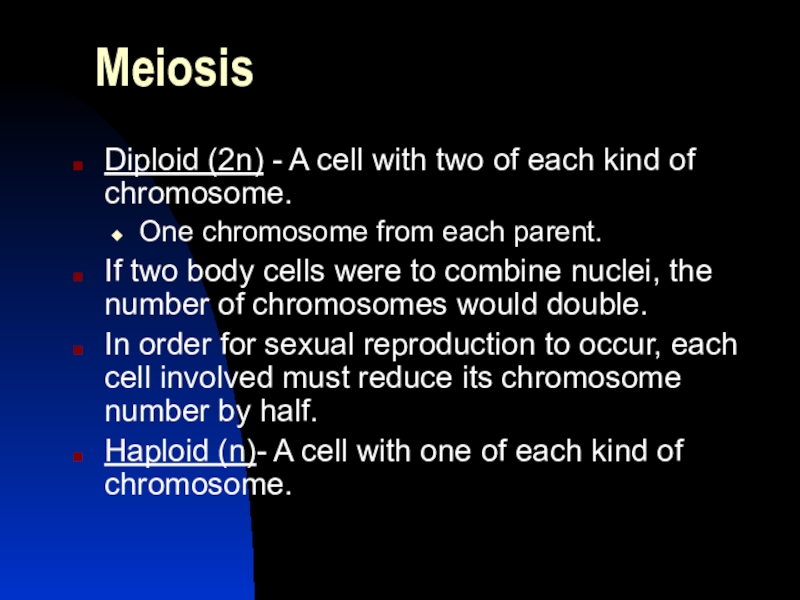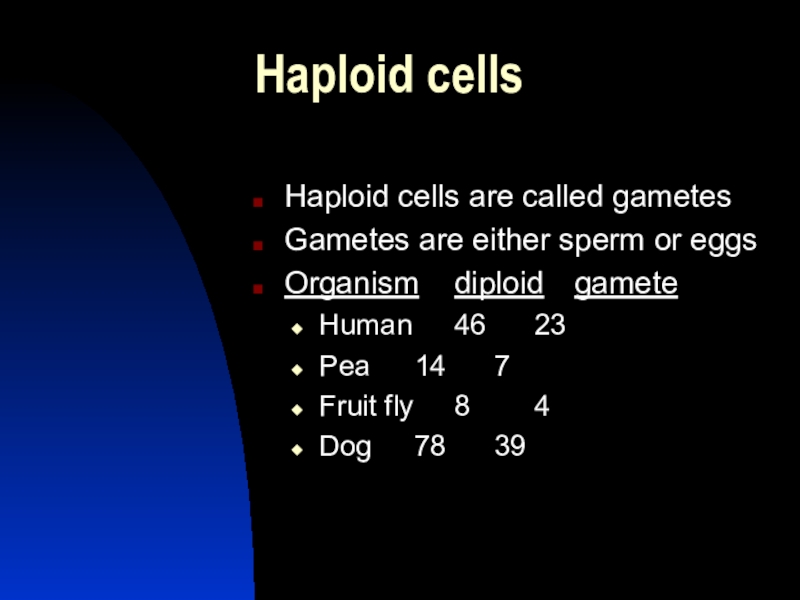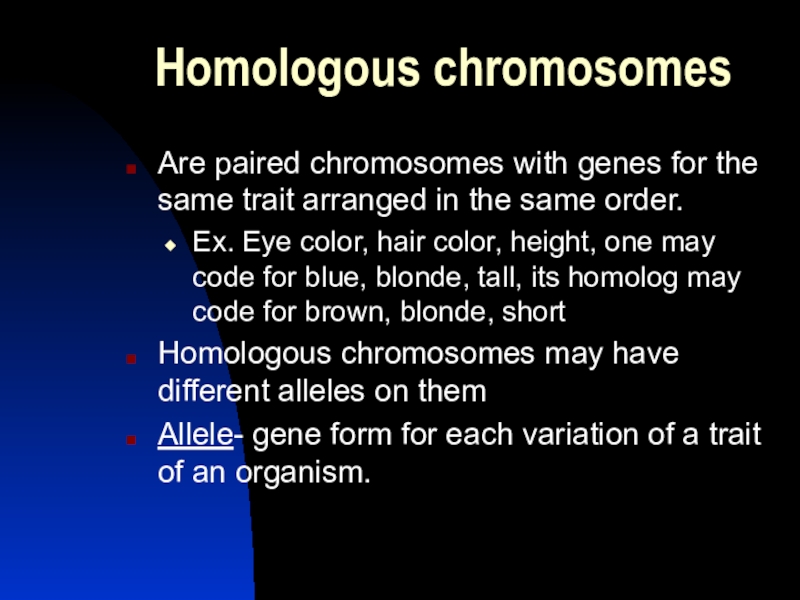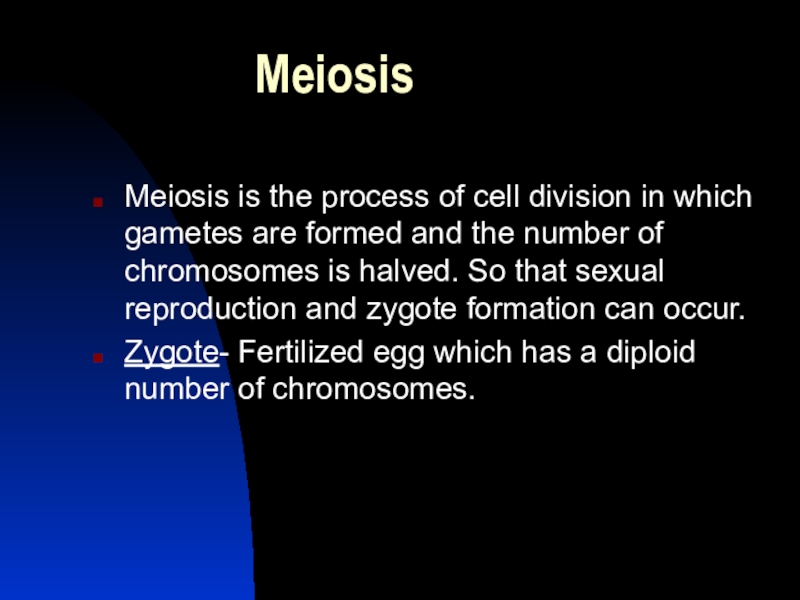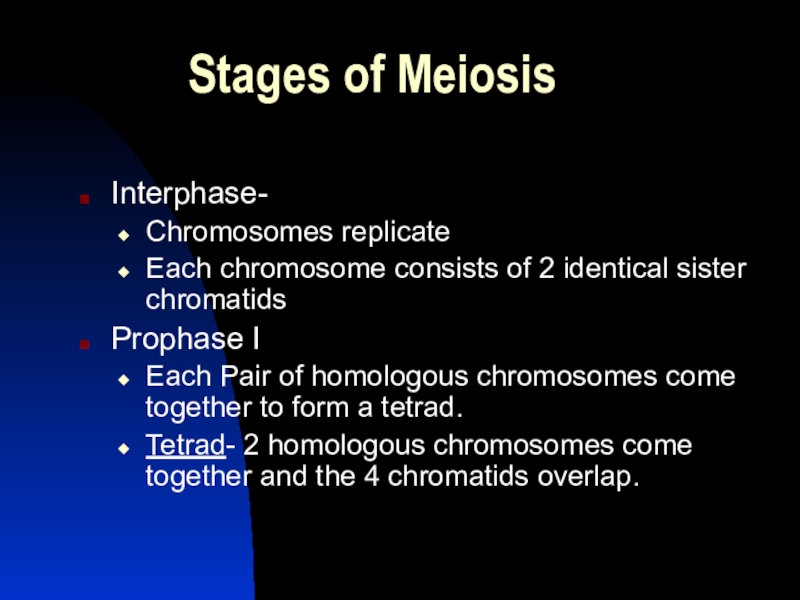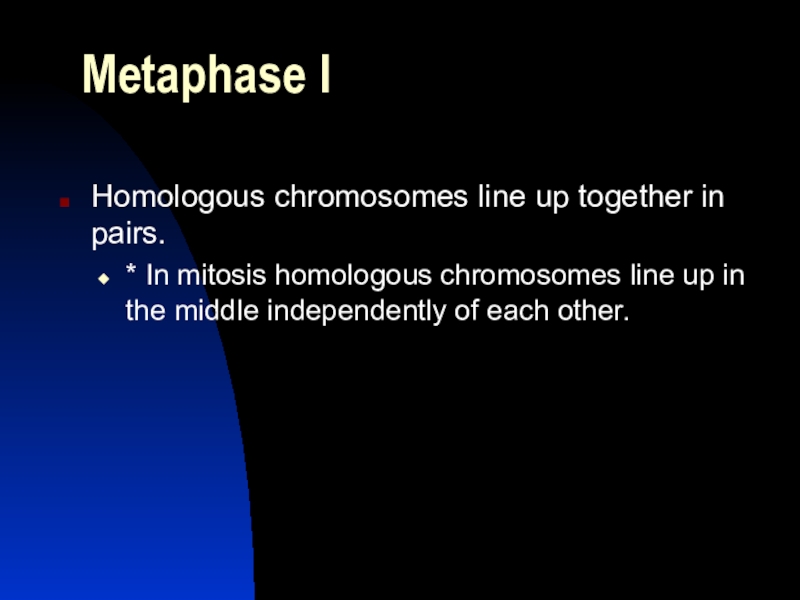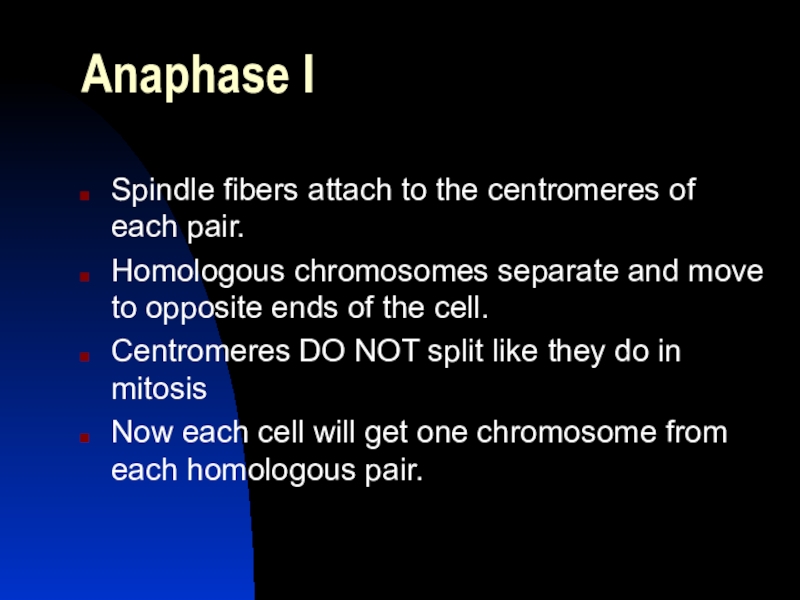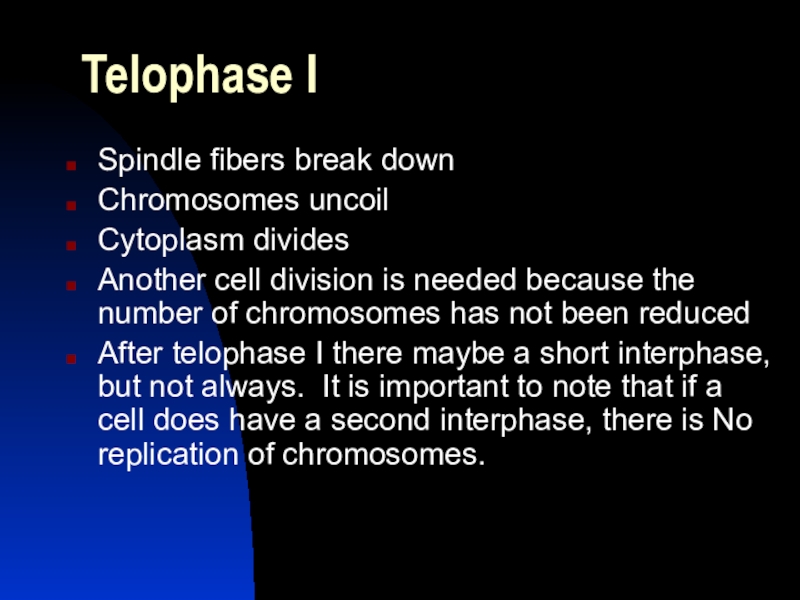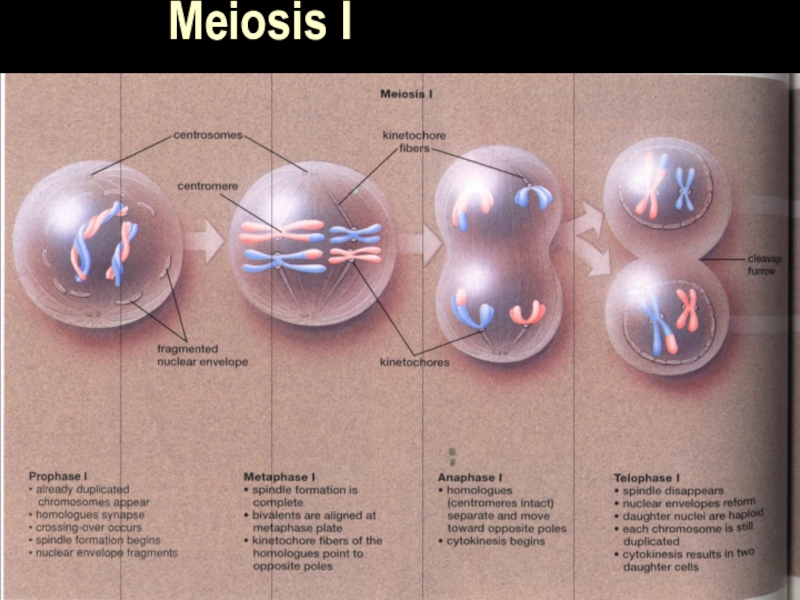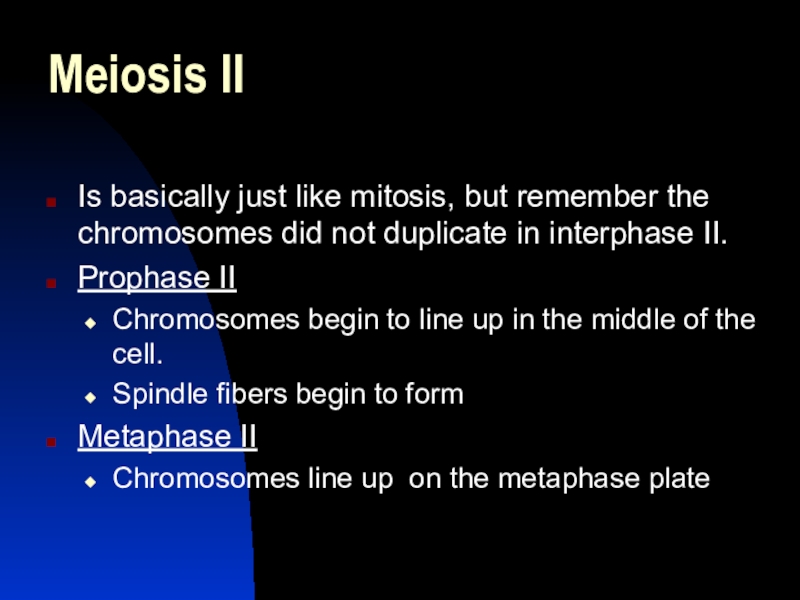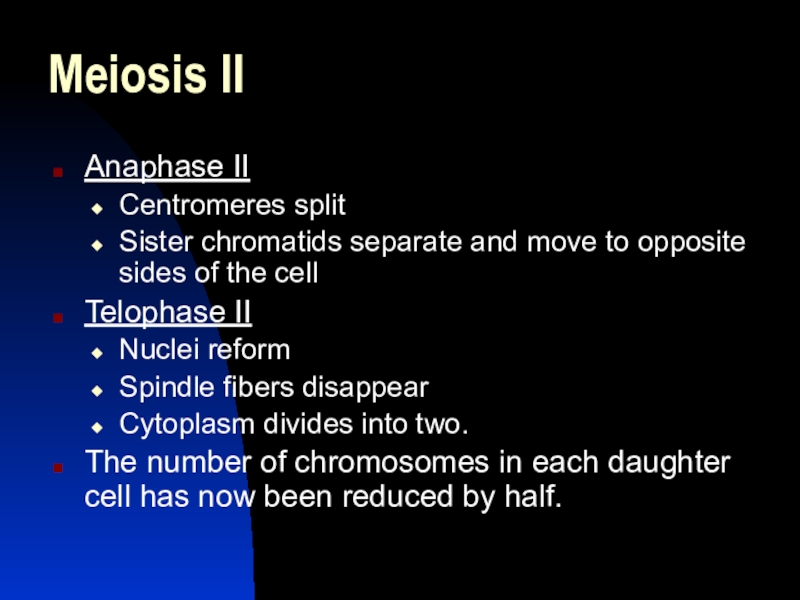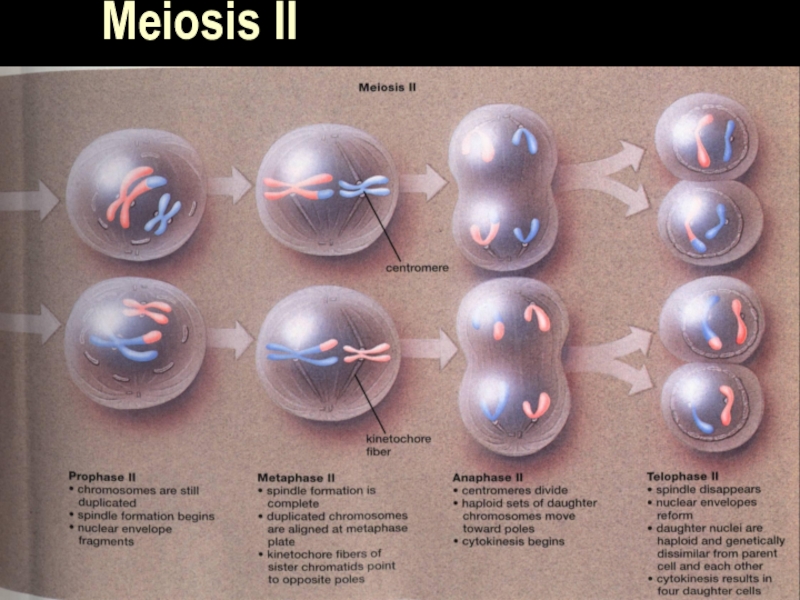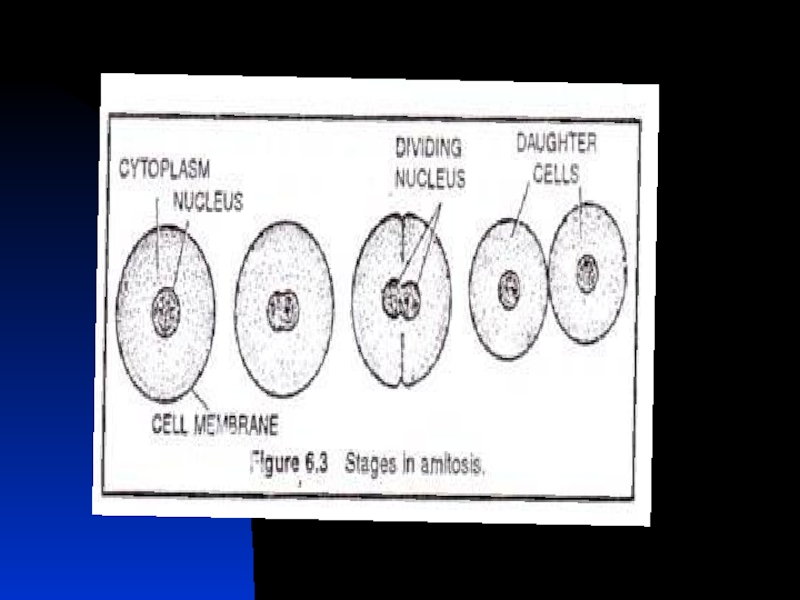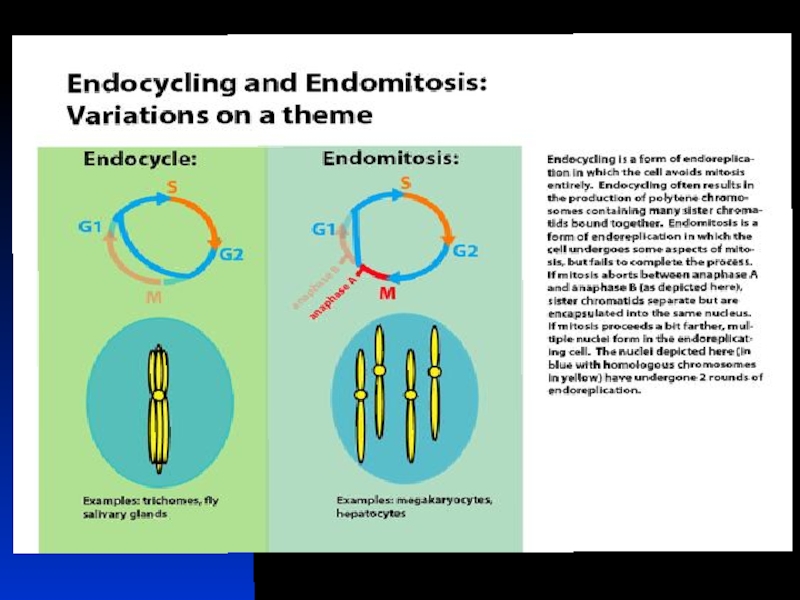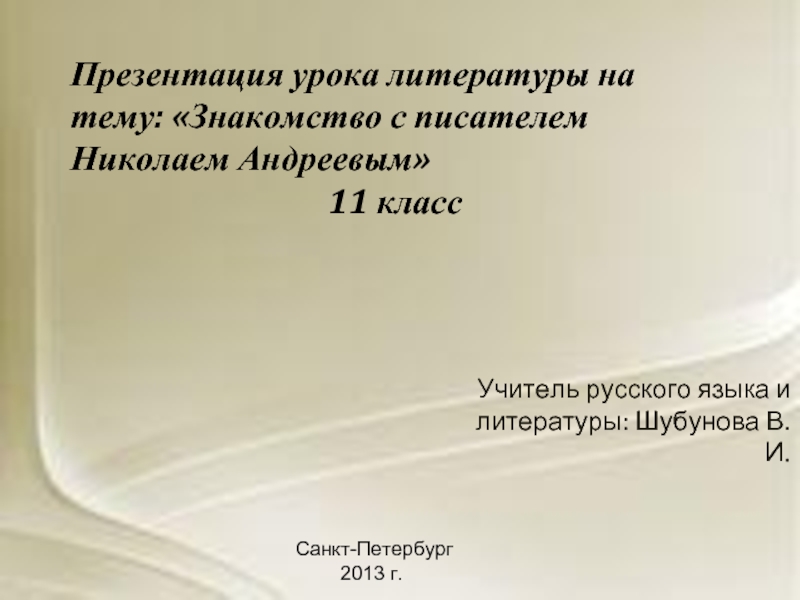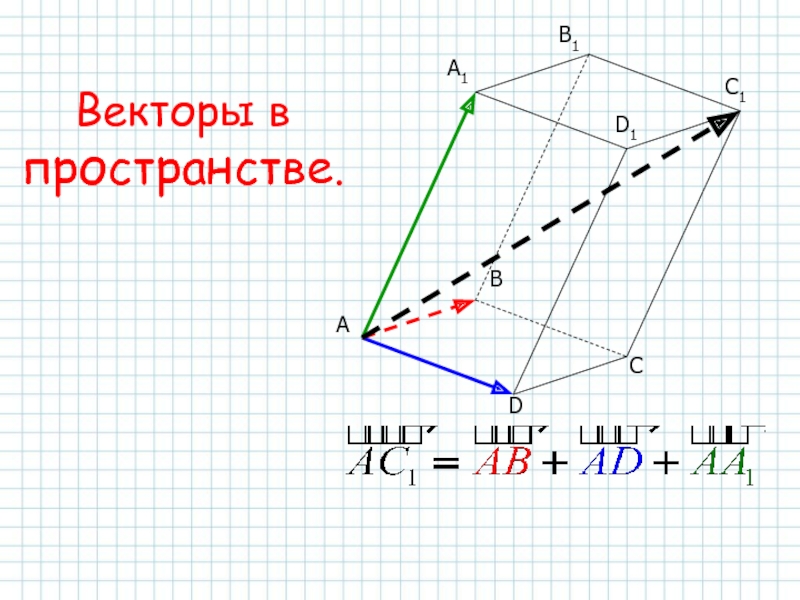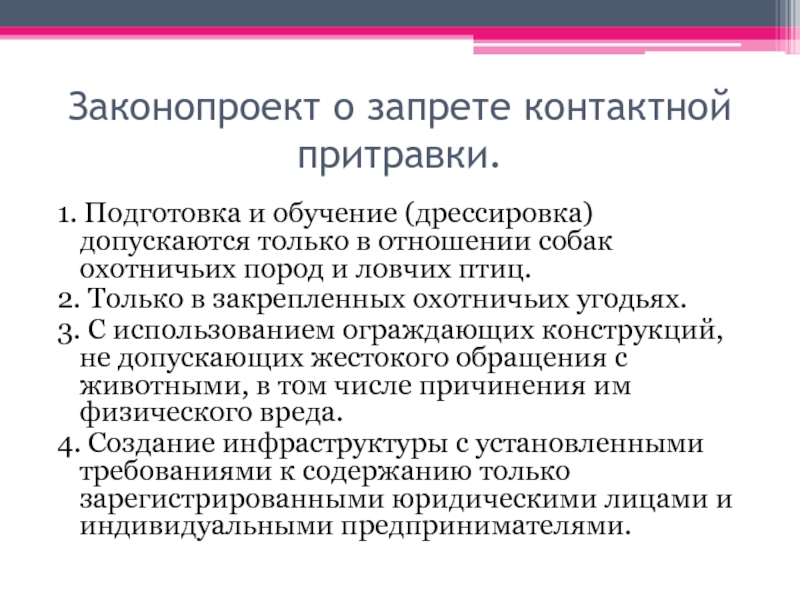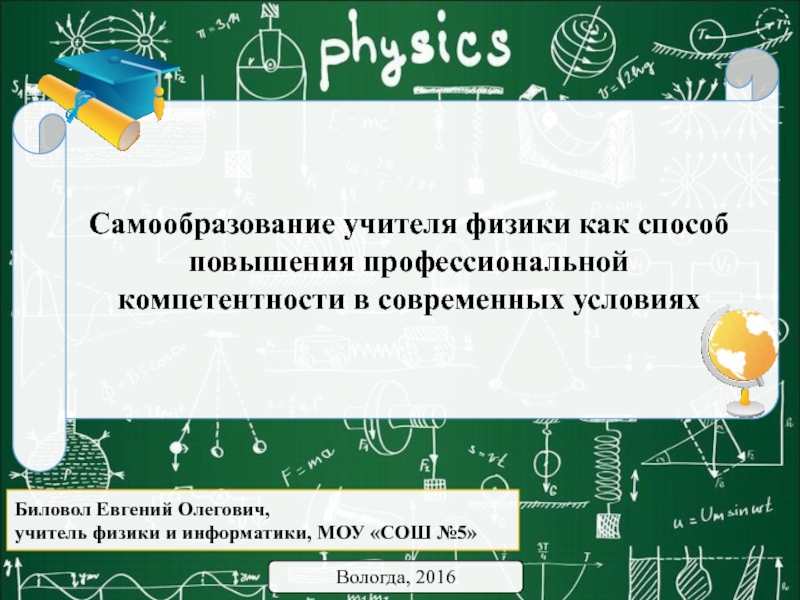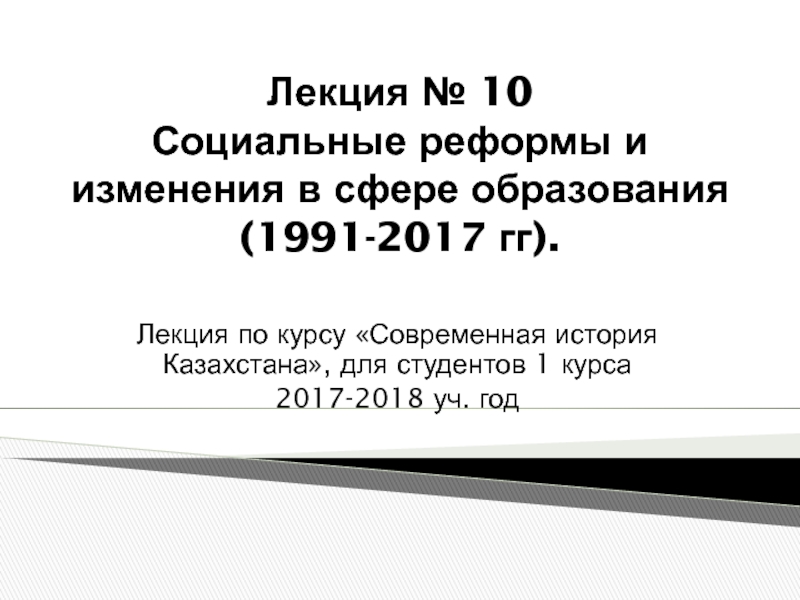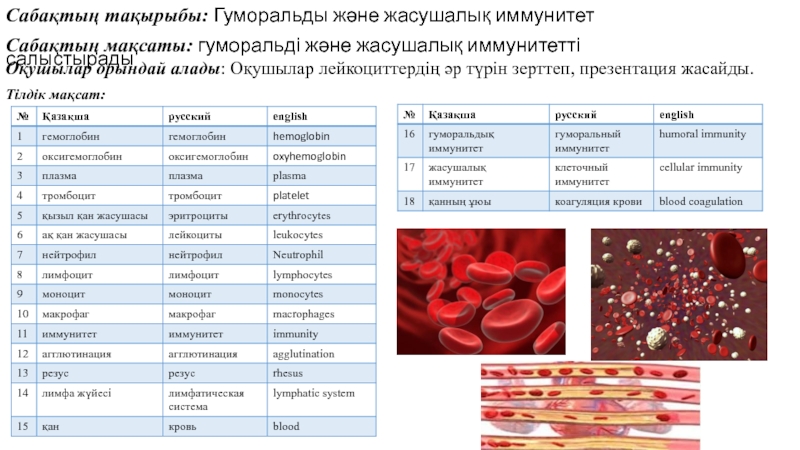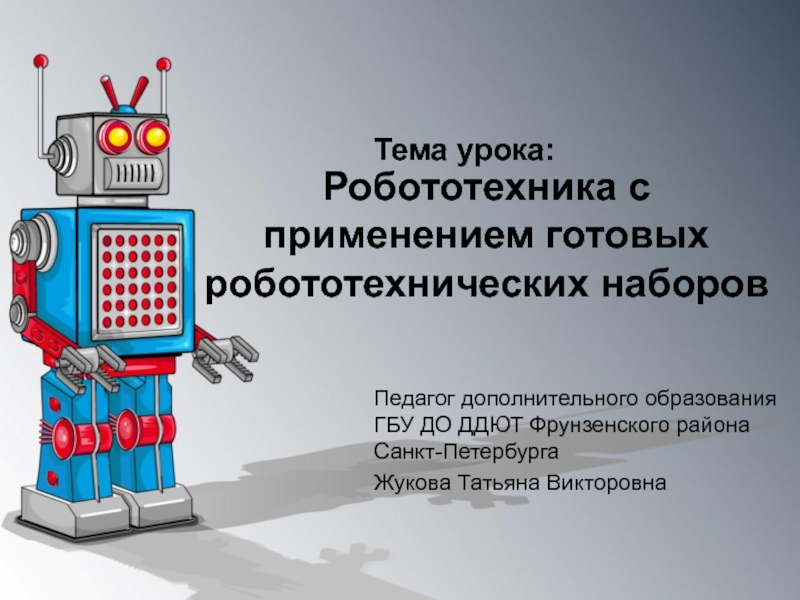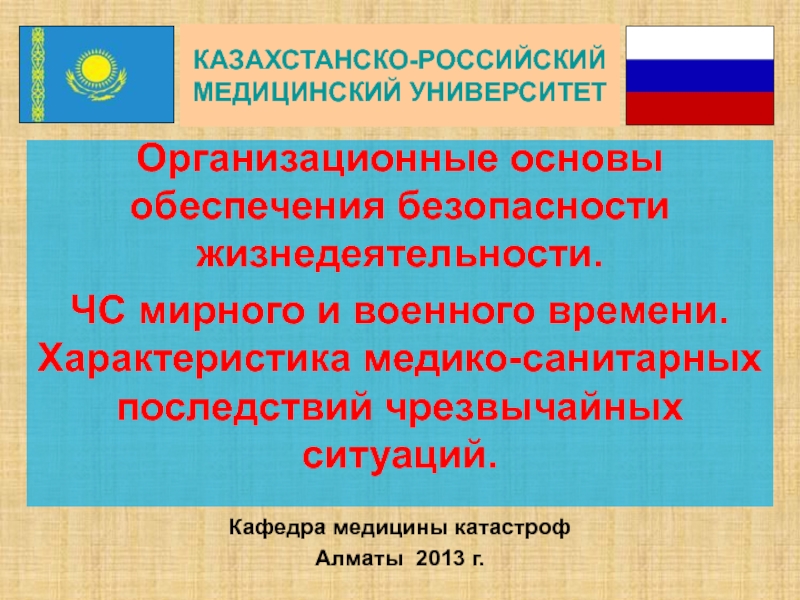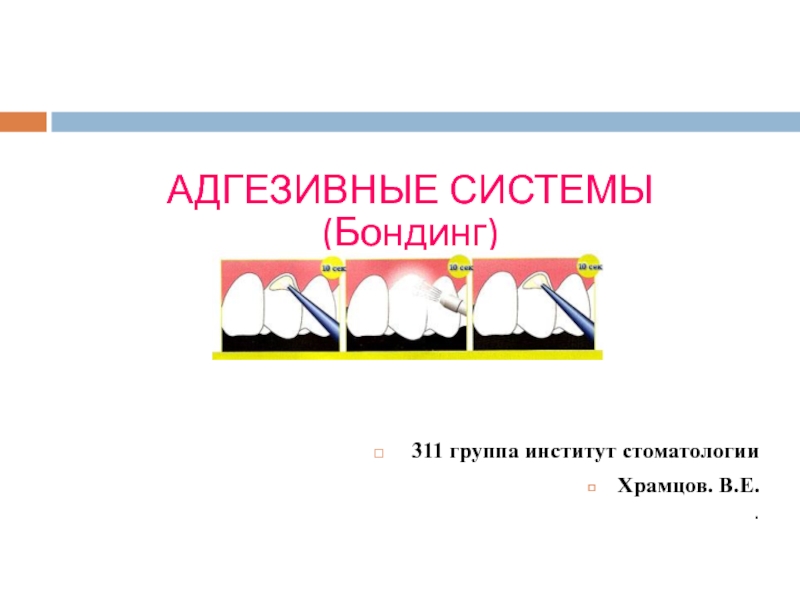Разделы презентаций
- Разное
- Английский язык
- Астрономия
- Алгебра
- Биология
- География
- Геометрия
- Детские презентации
- Информатика
- История
- Литература
- Математика
- Медицина
- Менеджмент
- Музыка
- МХК
- Немецкий язык
- ОБЖ
- Обществознание
- Окружающий мир
- Педагогика
- Русский язык
- Технология
- Физика
- Философия
- Химия
- Шаблоны, картинки для презентаций
- Экология
- Экономика
- Юриспруденция
The Cell Cycle-Mitosis and Meiosis
Содержание
- 1. The Cell Cycle-Mitosis and Meiosis
- 2. The Cell CycleThe sequence of growth and division of a cell
- 3. Слайд 3
- 4. Interphase = G1, S, G2 Interphase is
- 5. G1, S, G2G1 is when organelles double.
- 6. MitosisThe process by which the cell nucleus
- 7. Prophase
- 8. ProphaseChromosomes now called chromatids because they doubled
- 9. MetaphaseCentromeres of the chromatid pairs line up
- 10. Metaphase
- 11. AnaphaseThe spindle fibers pull the chromatids apart.This
- 12. Anaphase
- 13. TelophaseWhen the chromosomes reach opposite sides of
- 14. Telophase
- 15. CytokinesisThe two identical cells completely divide and the cell membrane is completely formed.
- 16. MeiosisDiploid (2n) - A cell with two
- 17. Haploid cellsHaploid cells are called gametesGametes are either sperm or eggsOrganism diploid gamete Human 46 23Pea 14 7Fruit fly 8 4Dog 78 39
- 18. Homologous chromosomesAre paired chromosomes with genes for
- 19. Meiosis Meiosis is the process of cell
- 20. Stages of MeiosisInterphase-Chromosomes replicateEach chromosome consists of
- 21. Metaphase IHomologous chromosomes line up together in
- 22. Anaphase ISpindle fibers attach to the centromeres
- 23. Telophase ISpindle fibers break downChromosomes uncoilCytoplasm dividesAnother
- 24. Meiosis I
- 25. Meiosis IIIs basically just like mitosis, but
- 26. Meiosis IIAnaphase IICentromeres splitSister chromatids separate and
- 27. Meiosis II
- 28. Слайд 28
- 29. Слайд 29
- 30. Скачать презентанцию
The Cell CycleThe sequence of growth and division of a cell
Слайды и текст этой презентации
Слайд 4Interphase = G1, S, G2
Interphase is when the cell
grows, and the organelles double prior to the actual splitting
of the nucleus.93% of a cell’s life is spent in interphase.
Interphase has three parts
Growth 1 (G1)
Synthesis (S)
Growth 2 (G2)
Слайд 5G1, S, G2
G1 is when organelles double.
Remember each new
cell needs a complete set of organelles.
S when DNA is
replicated. Each cell needs a complete and identical set of DNA
G2 Proteins needed for Mitosis are produced.
Слайд 6Mitosis
The process by which the cell nucleus divides into two
identical cell nuclei.
In some Human cells interphases lasts 15.3 hours,
while mitosis lasts only .7 hours.Occurs in a series of steps
Prophase
Metaphase
Anaphase
Telophase
Cytokinesis
Слайд 8Prophase
Chromosomes now called chromatids because they doubled to form short
thick rods which pair up and line up in the
center of the nucleus.A centromere connects the two halves of the doubled chromatids.
Spindle fibers begin to form.
Spindle fiber – a fibrous structure from the cytoplasm which forms to the centriole.
Centrioles move to opposite sides of the cell.
The nuclear membrane breaks down.
Слайд 9Metaphase
Centromeres of the chromatid pairs line up in the middle
of the cell.
Metaphase plate- location where the centromeres line up
in the center of the cell.By the end of metaphase each chromatid has attached to spindle fibers.
Слайд 11Anaphase
The spindle fibers pull the chromatids apart.
This separates each one
from its duplicate. These move to opposite sides of the
cell.Now there are two identical sets of chromosomes.
Слайд 13Telophase
When the chromosomes reach opposite sides of the cell the
spindle fibers break up.
The nuclear membrane begins to reform.
A furrow
begins to develop between the two sets of chromosomes.Слайд 15Cytokinesis
The two identical cells completely divide and the cell membrane
is completely formed.
Слайд 16Meiosis
Diploid (2n) - A cell with two of each kind
of chromosome.
One chromosome from each parent.
If two body cells were
to combine nuclei, the number of chromosomes would double.In order for sexual reproduction to occur, each cell involved must reduce its chromosome number by half.
Haploid (n)- A cell with one of each kind of chromosome.
Слайд 17Haploid cells
Haploid cells are called gametes
Gametes are either sperm or
eggs
Organism diploid gamete
Human 46 23
Pea 14 7
Fruit fly 8 4
Dog 78 39
Слайд 18Homologous chromosomes
Are paired chromosomes with genes for the same trait
arranged in the same order.
Ex. Eye color, hair color, height,
one may code for blue, blonde, tall, its homolog may code for brown, blonde, shortHomologous chromosomes may have different alleles on them
Allele- gene form for each variation of a trait of an organism.
Слайд 19Meiosis
Meiosis is the process of cell division in which
gametes are formed and the number of chromosomes is halved.
So that sexual reproduction and zygote formation can occur.Zygote- Fertilized egg which has a diploid number of chromosomes.
Слайд 20Stages of Meiosis
Interphase-
Chromosomes replicate
Each chromosome consists of 2 identical sister
chromatids
Prophase I
Each Pair of homologous chromosomes come together to form
a tetrad.Tetrad- 2 homologous chromosomes come together and the 4 chromatids overlap.
Слайд 21Metaphase I
Homologous chromosomes line up together in pairs.
* In mitosis
homologous chromosomes line up in the middle independently of each
other.Слайд 22Anaphase I
Spindle fibers attach to the centromeres of each pair.
Homologous
chromosomes separate and move to opposite ends of the cell.
Centromeres
DO NOT split like they do in mitosisNow each cell will get one chromosome from each homologous pair.
Слайд 23Telophase I
Spindle fibers break down
Chromosomes uncoil
Cytoplasm divides
Another cell division is
needed because the number of chromosomes has not been reduced
After
telophase I there maybe a short interphase, but not always. It is important to note that if a cell does have a second interphase, there is No replication of chromosomes.Слайд 25Meiosis II
Is basically just like mitosis, but remember the chromosomes
did not duplicate in interphase II.
Prophase II
Chromosomes begin to line
up in the middle of the cell.Spindle fibers begin to form
Metaphase II
Chromosomes line up on the metaphase plate
Слайд 26Meiosis II
Anaphase II
Centromeres split
Sister chromatids separate and move to opposite
sides of the cell
Telophase II
Nuclei reform
Spindle fibers disappear
Cytoplasm divides into
two.The number of chromosomes in each daughter cell has now been reduced by half.
